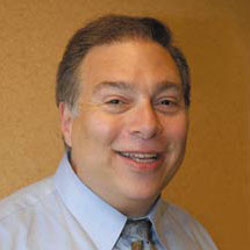By Dr. Paul Benson
The Eighth International AIDS Society (IAS) Conference on HIV Pathogenesis, Treatment & Prevention convened in Vancouver, Canada July 19-22. Throughout the corridors the excitement of delegates became obvious after hearing the many presentations describing recent progress in HIV treatment and prevention. Included was the most up to date information on vaccines, new therapies, approaches, co-infections, eradication and even a cure therapy for HIV.

In 1996 at this very same IAS conference in Vancouver, there were also presentations that became game changers in the war against HIV. That 1996 conference introduced a new treatment, the Highly Active Antiviral Reverse Transcriptase Inhibitors, now the standard of care commonly referred to as HAART, that transformed HIV into a chronic and manageable disease.
Last year at the World AIDS Conference in Australia, the World Health Organization introduced their 90-90-90 plan to eradicate HIV by the year 2030. That plan calls for 90 percent of the world's population of HIV positive individuals to be identified by testing, 90 percent of the HIV positive individuals to be on treatment for HIV, and that 90 percent of the known HIV positive individuals on treatment be undetected in their viral loads. Follow-up information of the 90-90-90 plan presented at this year's conference recognized that its successes so far are more than wishful thinking. Many countries around the world have made significant progress and are ahead of schedule in meeting their goal.
The WHO gave conference delegates a sneak preview into their change of treatment recommendations policy expected to be released this December. It calls for all HIV positive individuals to start therapy irrespective of what their CD4 counts are. This is a new strategy, although some countries are already adopting this. Money does make a difference and the WHO will work with countries lacking the financial resources to get this new treatment paradigm paid for.
Not only will this improve living with HIV, but it will also reduce transmission globally. Within any community, for every 1 percent increase in starting positive individuals on HIV treatment, there is a 1.7 percent decline in HIV acquisition. The results of the START and TEMPRANO trials support the WHO's new "soon to be" policy. These studies demonstrated that persons started on HIV therapy earlier rather than later, and with higher CD4 counts, have less HIV associated and non-HIV associated serious events, including a reduced mortality rate.
New HIV prevention studies (HPTN067 & IPERGAY) were presented furthering our knowledge about using the HIV drug Truvada for prevention (commonly referred to as PrEP). This therapy is intended for HIV negative high risk individuals to prevent transmission of HIV. These studies demonstrate that using Truvada provides additional protection to condoms alone in preventing HIV. The IPERGAY study demonstrated 86 percent effectiveness in that Truvada can be effective taken less than once a day. Currently, Truvada is approved only for once daily use.
Both studies demonstrated that intermittent or on-demand use of Truvada is associated with less adherence compared to daily use, which may lead to a decreased benefit. PrEP's effectiveness varies, especially among women. These findings reinforce the fact that Truvada is an excellent choice for many people to consider. It needs to be used with the most up to date advice. PrEP adherence and mode of delivery remain key concerns. New agents are being tested for prevention that includes injectable therapies that are administered quarterly. This should significantly reduce adherence issues.
The efficiency of the injectable drug, when its levels are low and not replaced with a new injection at the end of three months, needs to be addressed. There have been significant breakthroughs in the research of vaccinations. Vaccinations can be used for HIV treatment or prevention. Recent work was presented at the conference on the success of broad spectrum neutralizing antibodies. They occur naturally in about 20 percent of HIV individuals after two years of being infected. They have demonstrated effectiveness in reducing viral load.
The issue with using these vaccinations (antibodies) as treatment is that they only have an effect for about one month. The best way to use this therapy is now being considered. This form of treatment may become part of the cure strategy. Currently the goal of successful therapy is to reach a viral load that is undetectable. Remember that viral load tests measure what virus is in the blood and not necessarily in the tissue where it resides. Smarter and better treatment options are being considered and evaluated.
Perhaps with the newer drugs, or ones already available, we may find that two drug combinations are as effective as the standard HAART regimen of three. We need to find options of delivering and evaluating medications in tissues and latent reservoir sites. Sustained remission off therapy is rare, but achievable. Research is underway to find biomarkers to identify potential persons with no virus, no virus transmission possibilities and no possibility viral rebound. The cure therapy for these individuals would be stopping all HIV medications.
That's where broad spectrum neutralizing antibody vaccinations, or other new therapies, might be of benefit. We may need to intensify treatment for a specific period of time to eliminate the virus from all compartments of the body, then discontinue treatment. Elite controllers of the virus (those few that are not on therapy and are undetected) are being studied to determine if there are any biomarkers they have to predict this possibility. We are looking into "cure research" studies of taking appropriate people off therapy and observing them for viral rebound. This cure therapy should be achievable within the next 15 years… our lifetime.










